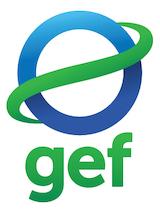CBA Jamaica: Land & Preservation Measures to Combat CC Pressures in Martha Brae Watershed
Introduction
The Cockpit Country area is one of Jamaica's last remaining wildernesses. It consists of 50,000 acres of forest reserve, large tracks of crown lands, and some private land holdings. As an eco-region, the project site is of significant global importance because of its unique topography and its large quantity of endemic species. The Martha Brae watershed encompasses several residential communities, including Bunkers Hill, which has about 2,000 residents. The community utilizes the ecosystem of Cockpit Country and its services to maintain their livelihoods. Local rivers provide domestic and irrigation water. Residents of Bunkers Hill are affected by frequent flooding which causes erosion and damages local croplands. Floods also destroy infrastructure, such as bridges and roads, preventing farmers from tending, harvesting, and transporting their crops.
This Community-Based Adaptation project stabilizes and reinforces riverbank slopes to protect against the loss of agricultural lands from the threat of climate change-driven increases in flood risks. It was developed through a participatory process involving all sectors of the Bunkers Hill community. The project aims to fortify community resources, such as croplands and bridges, by making them increasingly resilient to flooding and erosion.
* This project is part of Jamaica's Community-Based Adaptation portfolio. *





Project details
Jamaica’s Cockpit Country experiences an average annual rainfall of 250-380 cm, which recharges and supplies the main river systems. Based on historical averages, the heavy rainfall seasons of April - May and September - October account for 47% of the total annual rainfall. During this period, the Bunkers Hill community experiences higher water levels that result in flooding, causing damage to crops like coconuts, yams, dasheen, corn and sweet potato. Frequent flooding has also eroded the river embankment, damaging the existing abutment and threatening the bridge’s stability. The rising water restricts farmers’ access to their far holdings, threatening their livelihoods and resulting in crop losses.
Climate change projections for the Caribbean and areas like the Cockpit Country include increased rainfall of higher intensity, which will likely contribute to more severe incidents of flooding in Bunkers Hill, causing further erosion, threatening lives, and damaging croplands. Existing vulnerabilities to flash flooding are already a significant threat to the community. Any increase in flash flooding risks would threaten the region’s agricultural viability by eroding croplands, destroying crop production in close proximity to fresh water systems, severely eroding bridge abutments, and causing chemical and pollutant contamination..
This Community-Based Adaptation project will reinforce points along the river that are prone to erosion, protect a main bridge and access-way, and abate the impact of climate change on baseline levels. These project activities will make the area more resilient to projected climate change impacts and decrease the vulnerability of the ecosystem and the community’s livelihoods to climate variability. It will benefit the community by reducing the losses to crops and income from increasingly severe flooding. The project will also provide a better understanding for community members of climate change in general, the associated risks, and impacts, and enhance the community’s ability to autonomously adapt to climate change. Residents will also be better equipped to replicate the activities where necessary and influence the local policy framework in light of ongoing climate change impacts.
- Community
- Non-Governmental Organizations
Farmers; Residents in flood-prone areas
- Bunkers Hill CDC
- United Nations Development Programme (UNDP)
- Global Environment Facility (GEF)
- The GEF Small Grants Programme
- UN Volunteers
News
Key results & output
Objective: This project seeks to stabilize and reinforce river bank slopes to protect against the loss of agricultural lands from the threat of climate change-driven increases in flood risk, due to stronger hurricanes and higher-intensity rainfall.
Outcome 1: Community members, crops, and soil resources increasingly resilient against flooding and erosion
Reinforce erosion-prone points with “natural” stone barriers and topsoil coverage planted with indigenous plant species to protect against soil and bank erosion (“Bioengineered bank treatments”) (Output 1.1). Establish a culvert to divert floodwaters from bridge and access-ways, preventing erosion and slowing the rate at which water rises in the critical flow areas (Output 1.2).
Outcome 2: Resident sensitized to the effects and methods of flooding/erosion abatement
Produce brochures and training videos on climate change to sensitize critical community members on climate change risks, the value of the project, and the need to sustain its benefits. Where possible, use the project’s physical structures to assist with building both organizational and individual adaptive capacity (Output 2.1). Provide technical assistance and training to equip community members for managing project activities (Output 2.2).
Reports & publications
Videos & multimedia
Monitoring & evaluation
Monitoring and evaluation for community-based adaptation is a new field, and the CBA project is piloting innovative approaches to evaluating the success of locally-driven adaptation projects, and generating lessons to inform ongoing practice.
Key considerations in M&E for CBA include:
- Grounding M&E in the local context: M&E for CBA should avoid overly rigid frameworks, recognizing community heterogeneity and maintaining local relevance
- Capturing global lessons from local projects: CBA projects are highly contextualized, but lessons generated should be relevant to stakeholders globally
- Incorporation of both quantitative and qualitative indicators: to ground projects in tangible changes that can be objectively evaluated, and to capture lessons and case studies for global dissemination
To these ends, the CBA project uses three indicator systems: the Vulnerability Reduction Assessment, the Small Grants Programme Impact Assessment System, and the UNDP Climate Change Adaptation Indicator Framework.
The Vulnerability Reduction Assessment (VRA)
The VRA is a question-based approach with the following aims:
- To make M&E responsive to community priorities
- To use M&E to make projects more accountable to local priorities
- To make M&E capture community ideas and local knowledge
- To gather community-level feedback to guide ongoing project management
- To generate qualitative information
- To capture lessons on specific issues within community-based adaptation
- To generate case studies highlighting adaptation projects
The VRA follows UNDP's Adaptation Policy Framework, and is measured in a series of meetings with local community stakeholders. In these meetings, locally-tailored questions based on standard VRA questions/indicators are posed, and the community assigns a numerical score on a 1-10 scale for each question. Progress is evaluated through changes in scores over the course of implementation, as well as through qualitative data collected in community discussions surrounding the exercise.
UNDP has developed a Users Guide to the VRA (Espanol) (Francais) as a tool to assist practitioners to conceptualize and execute VRA measurements in the context of CBA projects.
The SGP Impact Assessment System (IAS)
The CBA, being a project of the GEF Strategic Priority on Adaptation, aims to increase the resilience of ecosystems and communities to the impacts of climate change, generating global environmental benefits, and increasing their resilience in the face of climate change impacts. To this end, the CBA projects use the SGP's impact assessment system for monitoring achievements in GEF focal areas (focusing primarily on biodiversity and sustainable land management).
The IAS is composed of a number of quantitative indicators which track biophysical ecosystem indicators, as well as policy impact, capacity development and awareness-building.
UNDP Climate Change Adaptation Indicator Framework
CBA projects also track quantitative indicators from UNDP's adaptation indicator framework, corresponding to the thematic area on natural resources management. More information on UNDP's indicator framework can be found on the UNDP climate change adaptation monitoring and evaluation website.
* This description applies to all projects implemented through UNDP's Community-Based Adaptation programme. Specific details on this project's M&E will be included here as they become available. *
Newsfeed
Contacts
- UNDP GEF Small Grants Programme - JamaicaMr. Dale RankineNational Coordinator
- UNDPCBA Project Management Unit
